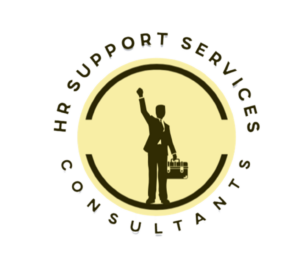
The world of Human Resource (HR) management has undergone a remarkable transformation in recent years. With the advent of online employee and human resource solutions, businesses are experiencing a revolution in the way they manage their workforce. In this article, we’ll explore the evolution of HR management, the benefits of online solutions, key features, implementation strategies, and the future of HR in the digital age.
The Evolution of HR Management
Traditionally, HR management was synonymous with piles of paperwork, manual record-keeping, and repetitive administrative tasks. However, the digital era has ushered in a new approach. Today, businesses are turning to online employee and human resource solutions to streamline their HR processes, making them more efficient and employee-friendly.
Benefits of Online Employee Management
Online employee management has brought about a revolution in the world of Human Resource (HR) management, offering a multitude of advantages that far surpass traditional HR practices. In this expanded section, we will delve deeper into the benefits of online HR solutions, emphasizing how they have the potential to significantly transform the way businesses operate, leading to increased efficiency, enhanced employee engagement, and substantial cost savings.
Increased Efficiency and Accuracy
Online HR solutions have revolutionized the way HR departments operate by streamlining a plethora of tasks that were previously time-consuming and prone to human error. Automation of routine administrative functions, such as data entry, leave requests, and payroll processing, not only speeds up the processes but also dramatically reduces the margin for error. As a result, HR teams can allocate their time and expertise to more strategic, value-added tasks, such as talent acquisition, training, and fostering a positive workplace culture.
Improved Employee Engagement
Engaged employees are the backbone of a successful business. Online HR solutions play a pivotal role in fostering employee engagement by providing user-friendly self-service portals that empower staff to manage their HR-related data independently. Employees can access their personal records, request time off, and view their performance evaluations, all in one place. This level of transparency and control not only empowers employees but also creates a sense of ownership over their HR-related matters, leading to increased job satisfaction and commitment to the organization.
Cost-Saving Advantages
Cost-effectiveness is a significant driver for businesses to embrace online employee management solutions. Traditional HR processes often involve excessive paperwork, manual data entry, and the associated storage and administrative costs. With online HR software, these overheads are significantly reduced. Paper-based processes are eliminated, and the need for physical storage space decreases. Moreover, the automation of tasks results in substantial time and resource savings, which can be redirected towards more strategic HR initiatives.
Enhanced Compliance and Reduced Risks
Compliance with labor laws and regulations is a critical aspect of HR management. Online HR solutions often come equipped with compliance features that help businesses stay on the right side of the law. These systems can automatically update and adapt to changing regulations, reducing the risk of non-compliance and associated penalties. This feature is particularly valuable in industries with complex labor laws, as it ensures that businesses remain up-to-date and in adherence with all requirements.
Real-time Data Insights
Online HR solutions provide businesses with real-time data insights, enabling them to make informed decisions based on accurate and up-to-date information. These insights can be leveraged to assess employee performance, track attendance, and even predict workforce trends. This data-driven approach to HR management allows businesses to identify areas for improvement, optimize processes, and ultimately achieve better outcomes.
Online employee management has ushered in a new era of HR management, offering businesses a host of benefits, including increased efficiency, improved employee engagement, cost savings, compliance, and real-time data insights. The time has come for businesses to embrace these modern HR tools and leverage them to create a more efficient and employee-friendly workplace, ultimately driving success and competitiveness in today’s ever-evolving business landscape.
Key Features of Online HR Solutions
Employee Self-Service Portals
One of the cornerstones of modern HR solutions is the Employee Self-Service (ESS) portal. This feature empowers employees to take control of their HR-related tasks. Through the ESS portal, employees can access and update their personal information, review pay stubs, request time off, and even enroll in benefit programs—all with just a few clicks. This self-service approach not only reduces the administrative burden on HR staff but also enhances employee satisfaction. When employees can independently manage their HR needs, they feel more in control and engaged in their work.
Time and Attendance Tracking
Accurate time and attendance tracking are fundamental for HR operations. Online HR solutions offer sophisticated tools for tracking working hours, absences, and overtime. These systems can integrate with various time-tracking methods, such as biometric scans, web-based clock-ins, or mobile applications. This level of accuracy in time tracking ensures that employees are fairly compensated, and it simplifies the payroll process. Additionally, it helps businesses identify attendance patterns and address any attendance issues promptly.
Performance Management Tools
Performance management is a critical aspect of HR. Traditional annual performance reviews are giving way to continuous and more collaborative approaches, thanks to online HR solutions. These systems offer tools for setting and tracking individual and team goals, providing timely feedback, and conducting regular check-ins. Managers and employees can use the software to document achievements, identify areas for improvement, and collaborate on personal development plans. As a result, performance management becomes an ongoing, constructive process that supports employee growth and productivity.
Employee Onboarding and Offboarding
The onboarding and offboarding process can be cumbersome and time-consuming. Online HR solutions simplify these procedures by providing pre-configured workflows and templates. New employees can complete necessary paperwork, review company policies, and access training materials online before their first day. Conversely, when an employee leaves the organization, the system guides HR staff through the offboarding checklist, ensuring that all tasks, such as equipment return and access revocation, are completed systematically. This streamlines the transition for both incoming and outgoing employees, making the process more efficient and less prone to errors.
Data Management and Compliance
Effective HR management requires the accurate and secure handling of sensitive employee data. Online HR solutions offer robust data management and compliance features. They ensure that personal information is stored securely and in compliance with data protection regulations. These systems also allow HR professionals to generate reports, track data changes, and audit records. As a result, organizations can maintain data integrity, meet legal requirements, and quickly respond to audit requests.
Integration Capabilities
Modern businesses rely on a variety of software tools and systems for their operations. Online HR solutions recognize the importance of integration and provide the capability to seamlessly connect with other software, including payroll systems, accounting software, and performance analytics tools. This integration ensures that HR data is consistent across the organization, reducing errors and increasing efficiency.
Employee Engagement Features
Engaged employees are more productive and less likely to leave their jobs. Online HR solutions often include features that promote engagement, such as employee surveys, recognition programs, and social collaboration tools. These elements foster a positive workplace culture and help HR professionals identify and address employee concerns in real time.
Mobile Accessibility
In our increasingly mobile world, online HR solutions are designed to be accessible on various devices, including smartphones and tablets. This mobile accessibility allows employees to interact with HR systems while on the go, making it easier for them to manage their HR-related tasks, such as requesting time off or checking their benefits. This flexibility enhances the overall employee experience.
The key features of online HR solutions have revolutionized human resource management by streamlining HR processes, increasing employee engagement, ensuring data accuracy, and providing the flexibility and mobility that modern organizations need to thrive. These tools empower both HR professionals and employees, leading to a more efficient, productive, and satisfied workforce. As the business world continues to evolve, online HR solutions are poised to remain a critical element in achieving HR excellence.
Selecting the Right HR Software
Choosing the right HR software is crucial. Businesses should consider factors such as their specific needs, budget, and scalability. Tailoring HR solutions to meet unique business requirements ensures maximum benefits and a seamless integration into existing processes.
Implementing Online HR Solutions
Implementing Online HR Solutions is a critical phase in the journey to revolutionize human resource management within a company. This process entails careful planning, precise execution, and effective communication to ensure that the transition to online HR tools is seamless and productive.
Careful Planning for Implementation
The successful implementation of online HR solutions begins with meticulous planning. This involves assessing the current HR processes, identifying pain points, and setting clear objectives for the transition. The planning phase aims to align the HR software with the specific needs of the organization. Considerations must be given to the size of the company, the complexity of HR processes, and the desired outcomes. It is vital to involve key stakeholders, including HR professionals, IT experts, and employees, in the planning process to gather input and insights from various perspectives.
Effective Communication and Change Management
Implementing online HR solutions is not merely about installing new software; it’s a transformation that affects the entire organization. Effective communication is a linchpin of success. Employees should be informed about the changes, the benefits, and the timeline. Regular updates and open channels for questions and feedback can alleviate concerns and resistance to change. In this phase, companies should also establish a change management plan to address any potential challenges that may arise during implementation.
Customization and Training
One of the key elements in successful implementation is the customization of the online HR solutions to fit the organization’s unique needs. While many HR tools come with standard features, tailoring them to match specific business processes can optimize their functionality. This customization stage involves configuring the software, setting user permissions, and aligning the interface with the company’s branding.
Concurrent with customization, providing comprehensive training to employees is essential. Training ensures that staff members are proficient in using the new HR software, from managing personal data to utilizing advanced features. A well-planned training program minimizes the learning curve and maximizes the benefits of the online HR solutions.
Testing and Feedback
Before full-scale implementation, it’s prudent to run a pilot program or conduct testing with a small group of employees. This phase allows for identifying any issues or bugs in the software and gathering feedback from users. Implementing the changes based on feedback helps refine the software and ensures it aligns with the practical needs of the organization.
Data Migration and Integration
For companies transitioning from manual HR processes to online solutions, data migration is a critical step. It involves transferring existing HR data into the new system, such as employee records, payroll information, and historical records. The integrity and accuracy of this data transfer are of paramount importance. Additionally, integrating the online HR solutions with other business systems, such as accounting software or CRM, can streamline overall operations.
Continuous Monitoring and Improvement
Once the online HR solutions are in place, continuous monitoring and assessment are necessary. This phase involves evaluating the performance of the software, ensuring data accuracy, and tracking how it aligns with the company’s goals and objectives. Regular updates and improvements are often needed to keep the HR tools in sync with the evolving needs of the business.
By following a well-structured implementation plan that emphasizes careful planning, effective communication, customization, training, testing, data migration, and ongoing monitoring, companies can successfully transition to online HR solutions. This comprehensive approach ensures that the benefits of efficiency, accuracy, and employee engagement are fully realized while minimizing disruptions during the transformation process.
Overcoming Common Challenges
While online HR solutions offer numerous benefits, they also come with challenges. Data security is a primary concern, and resistance to change can hinder adoption. Addressing these issues proactively is essential to ensure a smooth transition.
Maximizing Employee Productivity: The Power of Engaged Employees
In today’s competitive business landscape, the concept of maximizing employee productivity is central to achieving success. It’s not merely about employees completing tasks; it’s about fostering a workforce that is fully engaged and committed to their roles. Engaged employees are the driving force behind increased productivity.
When we talk about engaged employees, we are referring to individuals who are not only satisfied with their work but are emotionally invested in their jobs. They feel a strong connection to the organization’s goals, values, and mission. This emotional investment translates into a genuine desire to contribute their best effort to the company.
Engaged employees are the opposite of disengaged or passive workers. They actively seek ways to improve their performance, collaborate with their colleagues, and innovate in their roles. This level of commitment directly correlates with higher levels of productivity.
There are several factors that contribute to employee engagement, and modern HR solutions play a pivotal role in nurturing this engagement. Features such as self-service portals allow employees to take ownership of their HR-related tasks, giving them a sense of control over their work lives. They can easily access their records, request time off, and stay informed about company policies and updates. This self-service aspect not only saves time but also empowers employees, making them feel more valued and engaged.
Additionally, performance management tools within HR solutions enable managers to provide regular feedback and recognition, which is a key driver of employee engagement. Recognizing and rewarding good performance helps employees feel appreciated and motivated to continue excelling in their roles.
Companies that prioritize employee engagement through modern HR solutions often witness a substantial increase in overall productivity. Engaged employees are more likely to take on additional responsibilities, contribute innovative ideas, and work collaboratively with their peers. They become advocates for the company’s success, going the extra mile to help achieve the organization’s objectives.
In real-world scenarios, we see businesses that invest in employee engagement through online HR solutions experiencing remarkable transformations in their productivity. Employees who are genuinely engaged in their work tend to stay with the company longer, reducing turnover and the associated costs. This, in turn, contributes to a more stable and productive workforce.
When it comes to maximizing employee productivity, the role of engaged employees cannot be overstated. HR solutions that prioritize employee engagement have a significant impact on productivity levels within an organization. The key phrase here is clear: “engaged employees.” By nurturing a culture of engagement through modern HR tools, businesses are not just optimizing productivity; they are paving the way for long-term success and growth.
The Human Element in HR Solutions
In the ever-evolving landscape of HR management, one aspect remains constant and indispensable: the human element. While online employee and human resource solutions have revolutionized HR practices, they have not eliminated the need for human touch and understanding. In fact, they have enhanced the role of the human element in several ways.
Balancing Automation with the Human Element
Online HR solutions offer automation and streamlining capabilities that have significantly lightened the administrative burden of HR professionals. Tasks that once consumed valuable time, such as data entry, leave requests, and routine inquiries, can now be handled swiftly by software. This automation frees HR personnel from these repetitive tasks, allowing them to focus on higher-value, strategic aspects of HR management.
However, it is crucial to strike the right balance between automation and the human element. While automation ensures efficiency, the human element provides the empathy and personal touch necessary for fostering positive employee relations. HR professionals can use the time saved through automation to engage with employees on a deeper level, understanding their needs, concerns, and career aspirations.
Enhancing Employee Experience through the Human Element
The human element in HR solutions goes beyond mere paperwork and transactional tasks. It encompasses the entire employee experience within an organization. HR professionals play a pivotal role in ensuring that every employee’s journey within the company is filled with support, recognition, and opportunities for growth.
In a world where remote work is on the rise, the human element becomes even more critical. Online HR solutions can help HR managers maintain strong connections with remote employees through virtual meetings, personalized communication, and empathy in understanding the unique challenges remote workers face. This ensures that employees feel valued and engaged, regardless of their physical location.
Conflict Resolution and the Human Element
Conflict is a natural part of any workplace, but it’s how conflicts are handled that can make a significant difference. Online HR solutions can assist in documenting conflicts and issues, but it’s the human element that steps in to mediate, listen, and find solutions that promote harmony and productivity.
HR professionals with a strong human element are skilled in active listening and conflict resolution. They create an environment where employees feel comfortable sharing their concerns, knowing that their issues will be handled with care and discretion. This trust is a cornerstone of a positive workplace culture.
Maintaining a Personal Touch
The human element in HR solutions is about maintaining a personal touch in interactions. It’s about remembering employees’ birthdays, understanding their career goals, and acknowledging their achievements. While online tools can store this information, it’s the HR professionals who bring it to life.
Personal touches might include congratulatory emails, one-on-one meetings, or simply checking in on employees to see how they’re doing. These actions reinforce the idea that employees are not just numbers but valued members of the organization.
While online employee and human resource solutions provide automation, efficiency, and data-driven decision-making, the human element remains at the core of HR management. Striking the right balance between automation and empathy, enhancing the employee experience, and excelling in conflict resolution are all vital aspects of HR where the human element shines. By embracing both technology and the human element, businesses can create a workplace that is efficient, supportive, and people-focused, ensuring the well-being and success of their workforce.
Conclusion
In conclusion, online employee and human resource solutions are transforming the way businesses manage their workforce. The benefits are clear: increased efficiency, improved employee engagement, and cost savings. It’s time for businesses to embrace these modern HR management tools to stay competitive and lead their industries into the future.
FAQs
Are online HR solutions suitable for small businesses?
How do online HR solutions handle data security?
Can online HR software be customized to meet unique business needs?
What are the key features of performance management tools in HR solutions?
What trends can we expect to see in the future of HR management?






